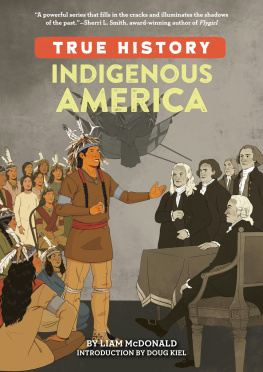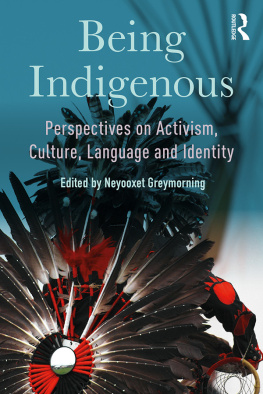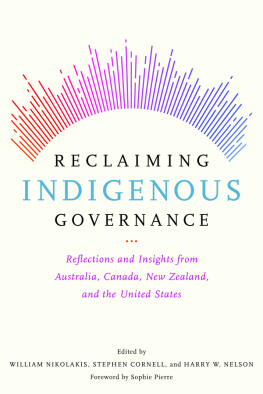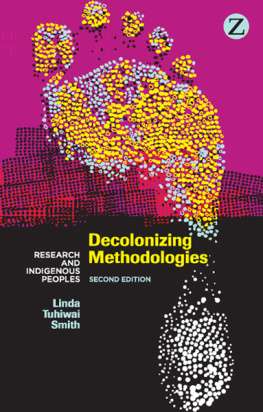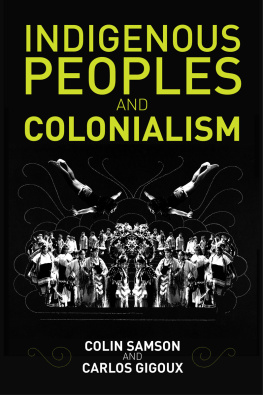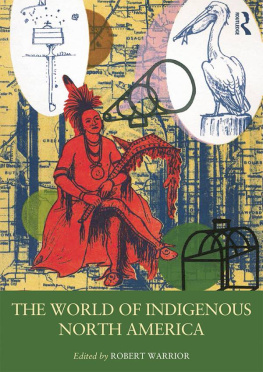Contents
Guide
Page List
INDIGENOUS CONTINENT

INDIGENOUS CONTINENT

The Epic Contest for North America
Pekka Hmlinen

LIVERIGHT PUBLISHING CORPORATION
A DIVISION OF W.W. NORTON & COMPANY
Independent Publishers Since 1923
CONTENTS
Part One
THE DAWN OF THE INDIGENOUS CONTINENT
(the first seventy millennia)
Part Two
APPEAR AT A DISTANCE LIKE GIANTS
(the long sixteenth century)
Part Three
THE CONTEST FOR THE GREAT AMERICAN INTERIOR
(early and mid-seventeenth century)
Part Four
THE INDIGENOUS BACKLASH
(late seventeenth century)
Part Five
THE ENDURING INDIGENOUS CONTINENT
(early eighteenth century)
Part Six
THE HEART OF THE CONTINENT
(mid- and late eighteenth century)
Part Seven
AMERICAN REVOLUTIONS
(late eighteenth century to early nineteenth century)
Part Eight
THE AGE OF EQUESTRIAN EMPIRES
(nineteenth century)
T HERE IS AN OLD, DEEPLY ROOTED STORY ABOUT America that goes something like this: Columbus stumbles upon a strange continent and brings back stories of untold riches. The European empires rush over, eager to stake out as much of this astonishing New World as possible. Even as they clash, they ignite an era of colonial expansion that lasts roughly four centuries, from the conquest of Hispaniola in 1492 to the Wounded Knee Massacre in 1890. Between those two moments, European empires and the nascent American empire amass souls, slaves, and territory, dispossessing and destroying hundreds of Indigenous societies. The Indians fight back but cannot stop the onslaught. Resourceful and defiant though they might be, they are no match for the newcomers and their raw ambition, superior technology, and lethal microbes that penetrate Native bodies with shocking ease. Indians are doomed; Europeans are destined to take over the continent; history itself is a linear process that moves irreversibly toward Indigenous destruction.
Indigenous Continent tells a different story. It offers a new account of American history by challenging the notion that colonial expansion was inevitable and that colonialism defined the continent, as well as the experiences of those living on it. Stepping outside of such outdated assumptions, this book reveals a world that remained overwhelmingly Indigenous well into the nineteenth century. It argues that rather than a colonial America, we should speak of an Indigenous America that was only slowly and unevenly becoming colonial. By 1776, various European colonial powers together claimed nearly all of the continent for themselves, but Indigenous peoples and powers controlled it. The maps in modern textbooks that paint much of early North America with neat, color-coded blocks confuse outlandish imperial claims for actual holdings. The history of the overwhelming and persisting Indigenous power recounted here remains largely unknown, and it is the biggest blind spot in common understandings of the American past.
The reality of an Indigenous continent has remained obscure because European empires, and especially the United States, invested power in the state and its bureaucracy, whereas Native nations invested power in kinship. From the beginning, European arrivals judged Indians on European terms. Later historians did the same, focusing on state power as the driving force in America. Kinship could be a source of great power, and Indigenous nations possessed advanced political systems that allowed for flexible diplomacy and war-making, even if Euro-Americans often failed to see them. Time and again, and across centuries, Indians blocked and destroyed colonial projects, forcing Euro-Americans to accept Native ways, Native sovereignty, and Native dominance. This is what the historical record shows when American history is detached from mainstream historical narratives that privilege European ambitions, European perspectives, and European sources.
The traditional master narrative is entrenched in our culture and minds. Consider how Red Clouds War and Custers Last Stand are usually understood. According to the conventional narrative, in a single decade between 1866 and 1876, the Lakota Indians and their Cheyenne and Arapaho allies defeated the United States in two warsfirst along the Bozeman Trail in what became known as Red Clouds War, and then in the Battle of the Little Bighorn, where they annihilated George Armstrong Custers 7th U.S. Cavalry Regiment. Both defeats have entered American history as aberrations or flukes. The United States, after all, had already become a continent-spanning military-industrial power poised to expand beyond the West Coast. The Lakotas had humiliated the United States at a charged moment when the nation was shedding its frontier identity and entering the modern era of the corporate, the bureaucratic, and the scientific. The fiascos would be blamed on poor generalship and on a canny enemy familiar with the terrain.
Seen from Native American perspective, however, Red Clouds War and Custers Last Stand appear not as historical anomalies, but as the logical culmination of a long history of Indigenous power in North America. They were more expected than extraordinary. From the beginning of colonialism in North America to the Lakotas final military triumphs, a multitude of Native nations fought fiercely to keep their territories intact and their cultures untainted, frustrating the imperial pretensions of France, Spain, Britain, the Netherlands, and eventually the United States. This Indigenous infinity of nations included Iroquois, Catawbas, Odawas, Osages, Wyandots, Cherokees, Comanches, Cheyennes, Apaches, and many others. Although each nation was and is distinct, a cultural crevasse separated the European newcomers from all Indigenous inhabitants of the continent, generating fear, confusion, anger, and violence. That divide fueled one of the longest conflicts in history, while simultaneously inspiring a centuries-long search for mutual understanding and accommodationa search that continues today.
The great pitfalls in the study of Native Americans are broad generalizations on the one hand and narrow specificity on the other. For a long time, historians tended to see Indians as a human monolith cut from a singleand primordialcultural cloth, a race defined by its tragic history of dispossession and its epic struggle for survival. This tradition informs many popular books that repackage Native American history into a morality play that is often more concerned with the United States and its character than with the Indians themselves. In these depictions of Native America, Indians appear as one-dimensional stock figures, their complexity and differences pressed flat for dramatic purposes. They are reduced to mere props in the United States violent transformation into a global power: Indigenous resistance and suffering heighten the drama, enabling people today to glimpse how much was lost and at what cost.
On the other end of the spectrum is a venerable tradition of tribal histories, each focusing on a single Native nation and providing a comprehensive portrait of its traditions, political structures, material culture, and historical experiences. This necessary and often superb scholarship has brought to life hundreds of previously obscured Indigenous peoples as forceful, creative, and resilient historical actors, filling a half-illuminated continent with human texture. The downside of this approach is its particularity. Each nation comes across as unique, embedded in its own microworld. Multiply this by five hundred, and the problem is plain to see. Examining Indigenous America in this way is like looking at a pointillistic painting from mere inches away: it overwhelms; it loses coherence; the larger patterns are impossible to discern.


